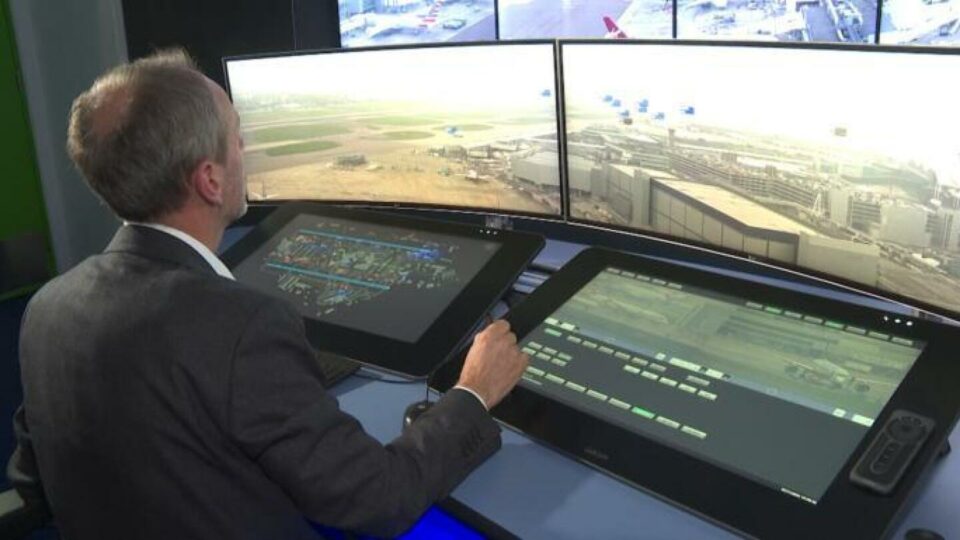—
“`html
Sky’s the Limit: Heathrow Airport Harnesses AI Technology to Revolutionize Air Traffic Control!
Understanding AI in Air Traffic Control
Heathrow Airport is at the forefront of integrating artificial intelligence (AI) into air traffic control systems. This innovative technology is designed to enhance safety, efficiency, and passenger experience across one of the world’s busiest airports. By harnessing the power of AI, Heathrow aims to reduce flight delays, improve traffic management, and ensure a smoother travel experience.
The Role of AI at Heathrow Airport
AI technology encompasses machine learning, predictive analytics, and real-time data processing. At Heathrow, various AI applications contribute to a seamless air traffic control operation:
- Predictive Analytics: By analyzing historical flight data, AI can predict potential delays and congestion.
- Real-Time Monitoring: AI systems continuously monitor flight paths, weather conditions, and various operational parameters.
- Decision Support Systems: AI provides air traffic controllers with data-driven insights for better decision-making.
Benefits of AI in Air Traffic Control
The integration of AI into Heathrow’s air traffic management comes with several benefits:
- Reduced Flight Delays: Utilizing predictive analytics allows for proactive measures to minimize delays.
- Enhanced Safety: AI’s real-time monitoring capabilities help identify potential risks, contributing to overall safety.
- Increased Efficiency: Better resource allocation leads to optimized traffic flow both in the air and on the ground.
- Data-Driven Insights: AI enables controllers to leverage vast amounts of data for informed strategic planning.
Practical Tips for Passengers
If you’re traveling through Heathrow Airport, here are some tips to enhance your travel experience in the age of AI:
- Check the airport app for real-time flight updates and AI-optimized information.
- Arrive early to allow for any unexpected delays that may still occur.
- Stay informed about weather conditions and their potential impact on your flight.
Case Studies of AI Implementation
Example 1: Flight Arrival Predictions
Heathrow has implemented an AI system that predicts flight arrivals with a high degree of accuracy. By analyzing historical data and real-time patterns, the system can forecast arrival times and facilitate better ground handling procedures.
Example 2: Automated Traffic Flow Management
Another notable example is the use of AI-driven traffic flow management systems. These systems analyze incoming air traffic and dynamically adjust landing schedules to minimize congestion, ensuring that aircraft can land and take off with reduced waiting times.
First-Hand Experience: A Frequent Traveler’s Perspective
As a frequent traveler passing through Heathrow Airport, the changes brought on by AI technology have been noticeable. The reduction in delays has been significant, and the overall efficiency of the airport has improved. The airport’s mobile application, powered by AI, provides real-time updates that enhance my pre-travel planning and on-the-ground experience.
The Future of Air Traffic Control with AI
Looking ahead, the integration of AI will continue to evolve within air traffic control systems globally. Other airports are
Enhancing Airport Operations: The Role of Innovative Technology
The implementation of advanced technology is essential for boosting both the efficacy and safety of handling the substantial number of flights at airports. This system is specifically designed to assist air traffic controllers in making more informed and timely decisions regarding aircraft operations, both on runways and in aerial space.
Streamlining Flight Management with Modern Solutions
By integrating cutting-edge tools into airport management, the aim is to create a more fluid operational environment. These technologies work in tandem with human oversight, facilitating improved coordination during peak travel times. For instance, as global air traffic continues to rise—with estimates suggesting a projected increase to 8.2 billion passengers by 2037—the demand for efficient systems has never been greater.
The Benefits of Collaborative Technologies
This innovative approach not only enhances decision-making processes but also minimizes potential delays and risks associated with high-volume flight operations. Studies indicate that employing automated systems can lead to a reduction in flight delays by up to 30%. With real-time data analysis capabilities, these technologies are transforming how air traffic operates globally.
As this sector evolves, acknowledging the synergy between humans and machines becomes crucial for airline safety and efficiency. The integration promises not only improved management but also a better flying experience for travelers worldwide.


